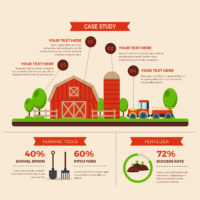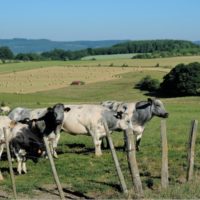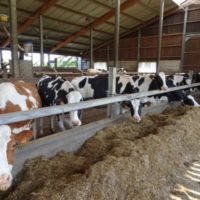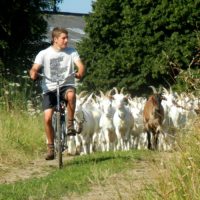Description
The soils of the farm are very dry in summer. The grass growth during summer never was important, but last years, it is absent.
Classical species (ryegrass, white clover) are too much impacted by the repeated drought. Other species are developed on the farm with more success : fescue, dactyl, lucerne and sainfoin.
With these species, the main difficulty is to be precise on the grazing management. It is especially true with tall fescue and dactyl.
The sainfoin have an important first cut and a little second cut. This plant give a fibrous and very sweet forage, witch is very appreciate by cattle, and rich in protein. The sainfoin have too health virtues useful for calves breeding.
Reason for the innovation
- Production of grass during summer
- Adapt his grasslands to climate change
Farm description
Environment
- Soils: Superficial, very dry in summer
- Climate: Semi continental
- Altitude: 400m
Grassland management
- Grazing: Yes, rotational grazing
- Grazing 7 months a year
Structure
- Annual Work Unit: 1
- Agricultural area: 55 ha UAA
- Temporary grassland: 22 ha
- Permanent grassland: 19 ha
- Corn silage: 8 ha
- Breeds: Prim’holstein
- Stocking rate: 1,37 UGB / ha of forage area
Animal performance
- Milk production per head: 7 900 L /year
Why it is working
Species are choose specially for the adaptation to the soil and climate context.
Farmer is vigilant during the seeding of temporary grassland, because the quality of seeding explain the productivity of the grassland.





